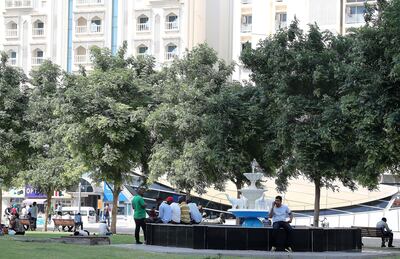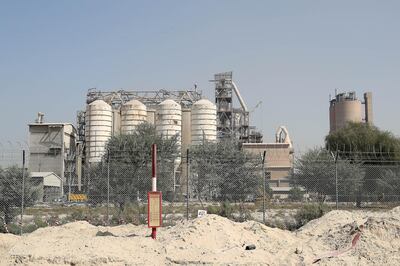As part of the preparations for Dubai's Architectural Biennale, visitors to the holding page on the organisation's website are being asked to submit 50-to-100-word architectural stories that describe their favourite spaces or buildings in Dubai. To submit your favourite, visit www.architecturalbiennale.com
Emirates Macaroni Factory Sheikh Zayed Road
(See picture above) Between the seemingly endless car showrooms and the overblown Muscovite classicism of the J W Marriott hotel stands the Emirates Macaroni Factory. It is in entirely the wrong place, on the Sheikh Zayed Road in a spot where you often get stuck in traffic. Those enforced intervals have forced me to contemplate this relic on the edge of Al Quoz Industrial Area. The building isn't much – a group of grain silos beside a representational building in a late modern, slightly sub-Richard Meier style. Although with production facilities dating from 1979, this pretty much counts as heritage here. But in the way the industrial forms crash into the commercial and in the way the building stands as a reminder of how the city has exploded swelling up what was once an industrial quarter into its new downtown, it supplies a sense of the speed of architectural history here. One day, perhaps it will make way for a cultural building, a Bentley showroom or a block of luxury apartments. Until then, it will make me smile every time.
Edwin Heathcote, architecture and design critic, Financial Times and editor-in-chief at Reading Design
Bani Yas Square (previously Nasr Square) Deira

There are very few public spaces or squares in Dubai (malls don’t count). The most notable and oldest one is Bani Yas Square, previously called Nasr Square, and it’s my favourite space in Dubai. Fantastic for people watching especially with a shawarma and cocktail juice in hand. It is vibrant, alive and a reminder of the Dubai that I grew up in. Like the people in and around the square (without whom the city would not be possible), it is a part of town not celebrated and largely unnoticed.
Mohamed Somji, photographer and director of Gulf Photo Plus, Dubai
National Cement Factory Al Quoz
This building, which excludes people, disembodies our understanding of space-theory and traditional modes of encounter. This structure, an open-plan (which we all know brings no closure), is a typology celebrated due to its association with modernism or relationship to genius; it sits somewhere between OMA’s “junkspace” and Marc Auge’s “non-place”, and is yet not a counter space. This is a colossal shell filled with air and debris, almost hovering over the city, protecting the fundamental material this city is founded on and constructed with. An enclosure for wanderers building in their imaginary landscapes, their form of utopian no-place a place where meetings cannot occur anyway.
Meitha Al Mazrooei, founder and editor of WTD Magazine
___________
Read more:
How Dubai's Alserkal Avenue is changing the way we think about architecture
Stranger landscape: the architectural secrets of the E11, the UAE’s longest road
A heartfelt plea for more recognition of Abu Dhabi's precious heritage
___________
My grandmother’s house Al Muteena
I often recall my grandmother’s old house. I remember what it felt like circling the house barefoot. I remember the texture of the concrete floor outside – cold, covered with chicken feathers, dry flowers and sand. I remember riding a tiny bicycle on one side of the house by the giant tree. I distinctly remember her small store with cupboards that went up to the ceiling. I now understand they were only 2.5 to 3 metres high, filled with jars of vegetables and pickled fruit that she had made. Inside this special house, there were flowers on the Arabic cushions and walls, and all the accents were sweet and feminine.
Noor Al Khaja, creative director at The White Boutique


